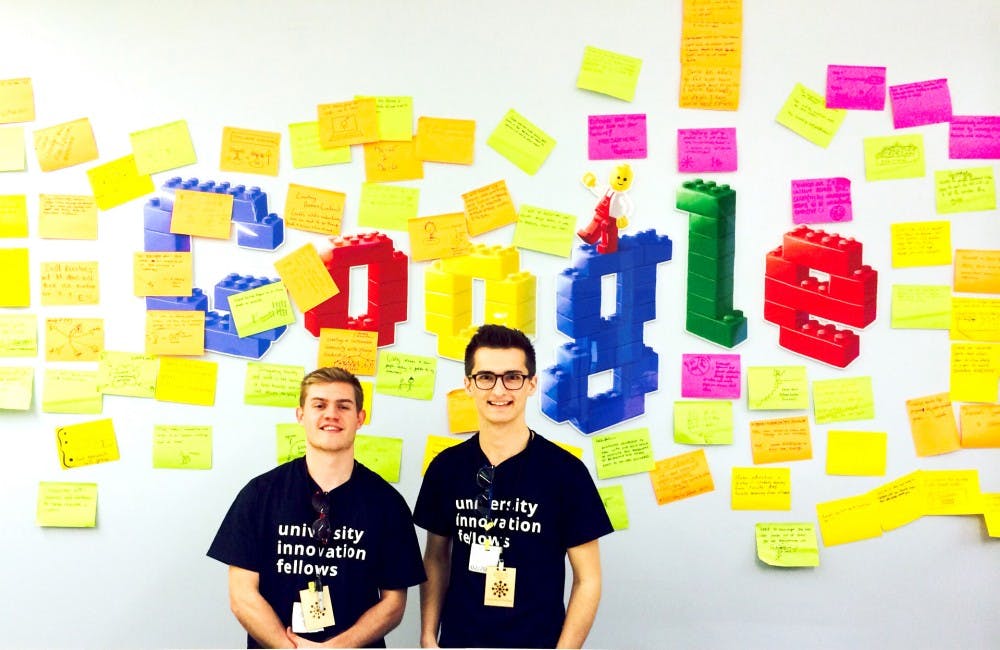Alina Rosenkranz |
Two students explored the world of innovation last month and hope to bring their ideas back to The Bluff.
Junior entrepreneurship and innovation major Taylor Hendricks and freshman operations and technology management major Cole Preece attended an innovation training at Stanford University in February. Their trip was sponsored by the Franz Center for Leadership, Entrepreneurship and Innovation.
The training - Epicenter - is a “pathways to innovation program” that helps students develop ideas and turn them into reality at their universities. It focuses on real-world problems in relation to undergraduate engineering and entrepreneurship.
This is the second year UP students made it into this competitive program, which includes 291 students from 115 universities nationwide.
Hendricks and Preece plan to bring some of the ideas they got at Stanford to UP. Together with former innovation fellow Kevin Bastien, they plan on establishing a space on campus dedicated to innovation. The idea was approved, but the three are still awaiting a decision from administration for a space for the new innovation center.
The center will encourage collaboration between different research fields and facilitate cross-departmental solutions to problems, according to Peter Rachor, director for entrepreneurship.
“You might have some people who are all about computer screens, other people all about the white board (and) other people all about drawings and fine arts,” Rachor said. “And the collaboration space is kind of set up to help all those people sort of break down the differences between what they do and come up with the best idea.”
After getting into the Epicenter program, Hendricks and Preece completed a six-week online training in order to go to Stanford. The training involved an online course taught by Stanford professors and included video conferences with other people from the program.
“What we learned really was the design-thinking process, and how to bring innovation to companies, organizations or groups,” Preece said. “How to start a movement.”
The meetup at Stanford included team building activities, panels and learning about the design-thinking process. All activities focused on the Epicenters’ mission “to bring students of all majors together to ideate, prototype and deliver solutions to human centered problems.”
“So it’s really just about how can we build an innovation space,” Preece said. “For programs that can bring students of all different disciplines – you know engineers, designers, scientists, sociologists, artists or whatever – to work on problems that are in the world or at our community, in our school, and give them the tools to bring those ideas to fruition and start working on them.”
The training at Stanford led to Hendricks and Preece working closer together on their innovation projects. During the training they would pledge ideas, but if their idea wasn’t supported, they’d support another person’s idea.
“The way I saw it was, I was going to have my project, he was going to have his, and we’d help each other a little bit,” Hendricks said. “But then after going down to Stanford I think we got a lot more.”
This fall, students will get the chance to apply to become innovation fellows next year.
Alina Rosenkranz is a reporter for The Beacon. You can reach her at rosenkra17@up.edu.








